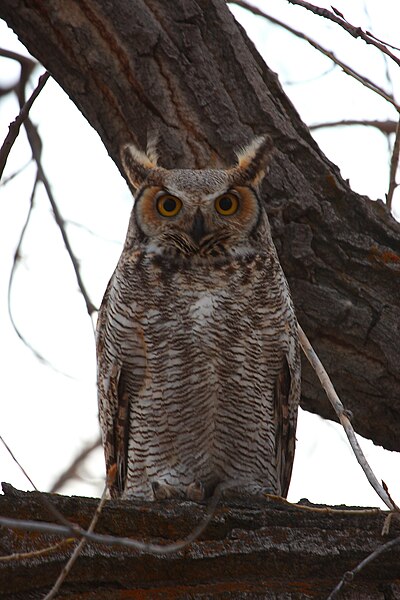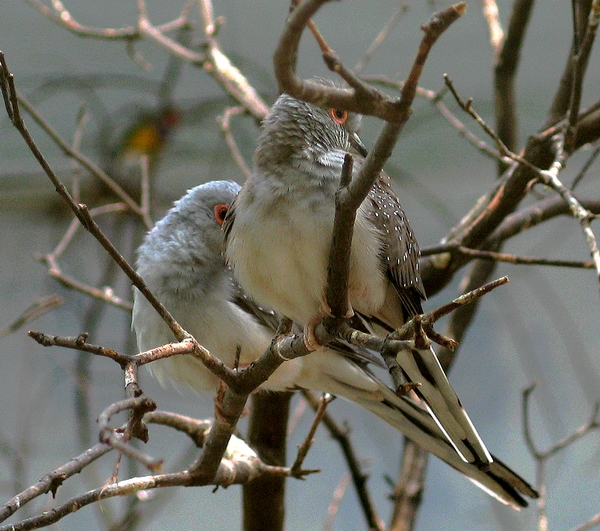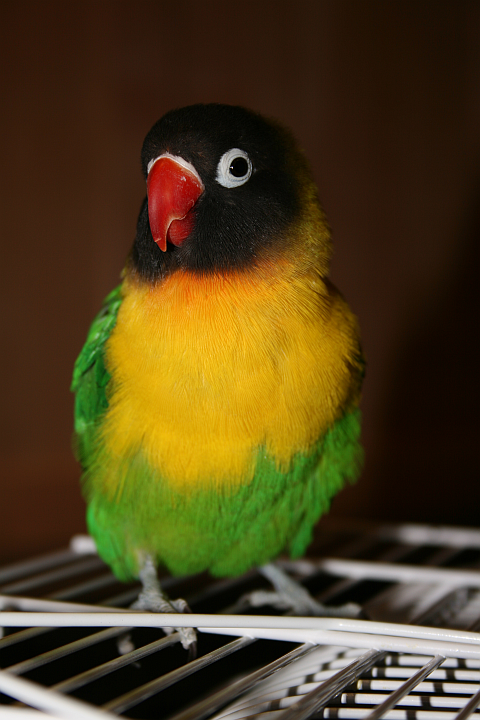Overview
 Today I’d like to cover a bird that, while generally illegal to keep in the USA, is one of the largest and most impressive species that might reasonably be encountered anywhere within the USA, and beyond – the Great Horned Owl.
Today I’d like to cover a bird that, while generally illegal to keep in the USA, is one of the largest and most impressive species that might reasonably be encountered anywhere within the USA, and beyond – the Great Horned Owl.
Their occasional propensity for living near people (until recently, a pair nested in Battery Park, Manhattan) results in a number being injured each year. I have cared for several such birds, and suggest that anyone interested in doing likewise apply for the necessary state permits and seek training as a Wildlife Rehabilitator. Hand-raised Great Horned Owls are gaining popularity with European aviculturists, and a few are even used, falconry style, to hunt game.
Physical Description
One of the largest of the world’s 135 owl species, in the Western Hemisphere the Great Horned is exceeded in size only by the Great Gray Owl (which it outweighs) and the Snowy Owl. It reaches 25 inches in length, and the wings may span 5 feet (sizes vary greatly among various populations).
The eyes are bright yellow, the throat white and the head is topped with prominent ear tufts. The color ranges from white in the Arctic to near black along the Pacific coast, but most individuals are varying shades of mottled tan, brown or dark gray. Females may be up to 20% larger than males.
Range
The vast range encompasses nearly all of North and South America. At least 13 subspecies are found from northern Alaska and Labrador through the southern 2/3 of Canada, in all 48 lower states and Mexico and south to the extreme southern tip of South America. Only the Barn Owl, which lives on all continents except Antarctica, is more widespread.
Habitat
Extremely varied, including tundra, deserts, swamps, grasslands, agricultural areas, city parks, mixed and coniferous forest, salt marsh, rainforest edges and mountain slopes.
Densities can be quite high in prime habitat. Suburban areas, with their mix of towns, fields, forests and parks, prove quite inviting to Great Horned Owls. Wildlife rehabilitators on Long Island, NY rarely release birds there as nearly every suitable area has been claimed by a nesting pair.
I have found Great Horned Owls nesting in California desert caves and abandoned buildings in NYC, along a salt water bay in a NYC suburb, at a rainforest edge in Costa Rica and on farms in the Venezuelan llanos.
Diet
This is our most powerful owl, and one of the world’s most formidable avian predators. Over 260 prey species have been recorded, including raccoons, opossums, muskrats, flying squirrels and other rodents, smaller owls and birds to the size of red-tailed hawks and great blue herons, small alligators, snakes, turtles and frogs, large insects, fish (will wade in shallow water) and road-killed animals.
It is one of the few predators that regularly takes striped skunks and porcupines. It will, in most “un owl-like” fashion, do battle on the ground – I still recall a striking series of photos from the 1960’s Time-Life Nature Library Series depicting a Great Horned Owl “wrestling” with (and nearly losing its life to) a large bullsnake.
Owls living near farms take ducks, turkeys, geese and other fowl, and have been observed walking into coops to snatch chickens. In NYC and other urban areas, Great Horned Owls feed largely upon rats and roosting pigeons, but have been known to take domestic cats.
Reproduction
In the northeastern USA, mating occurs in January, and females are incubating eggs by February, when snows are still likely. The owls often appropriate the nests of red-tailed hawks and other large birds – sometimes driving off or even killing the owners. Depending upon the habitat, rock ledges, tree cavities, abandoned buildings, barns, large cactus plants or even the ground may serve as a nest site.
The female lays 1-5 eggs and incubates the clutch for 35-40 days (males in some populations may incubate as well). The young are fed by both parents and fledge in 8-10 weeks.
Both parents are extremely aggressive in defending the nest, and quite literally will not cease their attacks until the intruder, human or otherwise, has been driven off. A coworker of mine at the Bronx Zoo once entered a pair’s exhibit without a hard hat and landed in the hospital with severe scalp lacerations as a result.
Great Horned Owl pairs defend specific home territories for many years, but forage singly outside of the breeding season.
Miscellaneous
Owls are often referred to as “Birds of Prey”, along with hawks, falcons, eagles and vultures. They are not, however, related to any of these birds.
Great Horned Owls are classified within the owl family Bubonidae (the Eagle Owls) and are the only representative of the group to dwell in the Americas. Eleven other eagle owl species, all large, formidable predators (the massive European eagle owl occasionally takes deer fawns), are found in Europe, Africa and Asia. In terms of their role in the environment, eagle owls are considered to be the nocturnal equivalent of the diurnal eagles and larger hawks.
Next time I’ll discuss Great Horned Owls in captivity, and relay a few personal experiences.
Further information on the Great Horned Owl, including photos and voice recordings, is posted at:
http://www.owling.com/Great_Horned.htm
Image originally posted by Billy Hunt and referenced from Wikipedia Commons.
 That Bird Blog – Bird Care and History for Pet Birds
That Bird Blog – Bird Care and History for Pet Birds

 Diamond Doves get along well with most finch species, including canaries, but only when housed in large outdoor aviaries or rooms within homes. They are intolerant of other dove species. Although gregarious in the wild, captives do best when kept in pairs as opposed to groups.
Diamond Doves get along well with most finch species, including canaries, but only when housed in large outdoor aviaries or rooms within homes. They are intolerant of other dove species. Although gregarious in the wild, captives do best when kept in pairs as opposed to groups. Click
Click